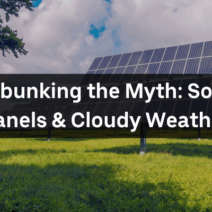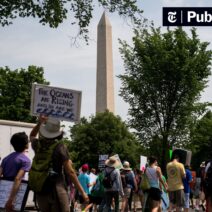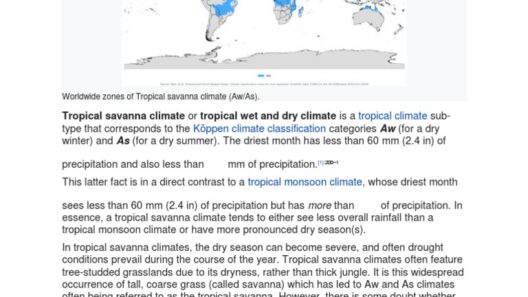Climate change has often been analogized to a slowly brewing storm: its ominous clouds gather gradually, obscuring the azure skies we once took for granted. As the winds of change whip through global ecosystems, the inquiry arises—when will the world end due to climate change? This question, laden with apocalyptic overtones, invites a discourse woven with myth and reality, offering a rich tapestry of understanding.
To dissect this query, it is paramount to delineate between sensationalism and substantiated scientific projections. The notion that climate change will usher in a simultaneous end for humanity—an instantaneous cataclysm—is a fallacy steeped in dramatic storytelling. Rather, climate change is akin to a relentless tide, gradually eroding the shorelines of our existence. It represents a protracted series of challenges, rather than a singular, dramatic climax.
One prevalent myth suggests that climate change will result in an immediate apocalypse, characterized by chaotic weather patterns, widespread destruction, and a sudden collapse of society. This dystopian narrative is prevalent in popular culture, due in part to cinematic portrayals of near-instantaneous devastation. In reality, climate change has more in common with a chronic disease. Its symptoms—rising temperatures, increasingly erratic weather patterns, melting ice caps, and shifting biodiversity—develop progressively, presenting a diffuse threat that manifests over decades.
Indeed, the existential threats posed by climate change are real and immediate. Scientific models project a stark scenario: if greenhouse gas emissions continue on their current trajectory, the world could witness significant temperature increases—potentially exceeding 1.5°C above pre-industrial levels by the end of the century, leading to catastrophic repercussions in numerous environments. These projections align with a gradual descent into turbulence rather than a climactic explosion.
Another intriguing myth is the belief that technological innovation alone will save humanity from the brink. This viewpoint often veers into complacency, as it emphasizes the idea that future breakthroughs—be it carbon capture technology or geoengineering—will provide a panacea to our climate woes. While innovation holds remarkable promise, it is crucial to recognize that these advancements cannot replace the urgent need for immediate action. Cutting emissions, preserving biodiversity, and transitioning to sustainable practices are imperative in the here and now.
The reality is multifaceted: the effects of climate change are already palpable across the globe. Heatwaves scorch the earth, droughts desiccate farmland, and torrential rains wreak havoc across regions. Coastal communities grapple with rising seas, while others face the encroachment of invasive species that disrupt local ecosystems. These are not distant threats—they are the harbingers of our present circumstances, heralding a future where adaptability is essential for survival.
As we contemplate the long-term impact of climate change, it is also pivotal to examine the psychological aspects of apocalyptic thinking. An ingrained belief in impending doom can lead to despair, paralysis, or a sense of futility. Yet, history has demonstrated humanity’s resilience and capacity for transformation. The metaphor of the phoenix rising from the ashes serves as a poignant reminder: through collective action and fervent commitment, we can address the crises sparked by climate change.
Moreover, an often overlooked facet of the climate conversation is the intersection of social justice and environmental sustainability. Vulnerable populations—particularly those in developing countries—are disproportionately affected by climate change consequences, as they often lack resources to adapt. The myth, then, that climate change affects us all equally is a dangerous oversimplification. Acknowledging these disparities is crucial, as tackling climate change extends far beyond environmental concerns; it involves addressing systemic inequalities that exacerbate vulnerability.
As we navigate this complex landscape of climate threats, one must recognize that no absolute endpoint exists; rather, we face a continuum of risk and opportunity. Predictions vary widely—some forecasts suggest catastrophic changes by 2030 if no action is taken, while others obfuscate the timeline, suggesting potential adaptability could push the most severe impacts several decades down the road. This uncertainty can be disorienting, yet it underscores the importance of informed dialogue and engagement.
The reality is not one of imminent obliteration, but rather a clarion call for action. The phrase “we have only one planet” encapsulates the urgent need for global stewardship. Each individual possesses a role to play—perhaps through lifestyle changes, advocacy for policy reform, or educational outreach. While the clock ticks on climate action, movements advocating for sustainability, renewable energy adoption, and grassroots advocacy are burgeoning signs of hope.
Concrete steps can be taken today to foster a healthier planet tomorrow. Reducing carbon footprints, promoting circular economic models, and embracing renewable energy sources are pivotal strategies that can contribute to mitigating climate change. Furthermore, fostering collaboration across sectors and communities can enable transformative change, creating synergies that magnify impact.
Embracing a future in which humanity coexists harmoniously with the environment requires recognizing the wisdom of our predecessors and those who lived in sync with nature. Their knowledge reminds us that sustainability is not merely a modern construct, but an age-old necessity. As stewards of this planet, we must invoke the collective spirit to forge a path toward resilience and sustainability.
Ultimately, understanding the interplay between myth and reality regarding climate change is crucial. Climate change, rather than a singular appointment with doom, invites an ongoing journey toward resilience. The world may not end in an instant, but it is undeniably changing. The power to shape that change lies within our grasp—through action, advocacy, and innovation. The metaphor of the storm shifts; while its arrival may be gradual, the winds of change await our decisive response.






